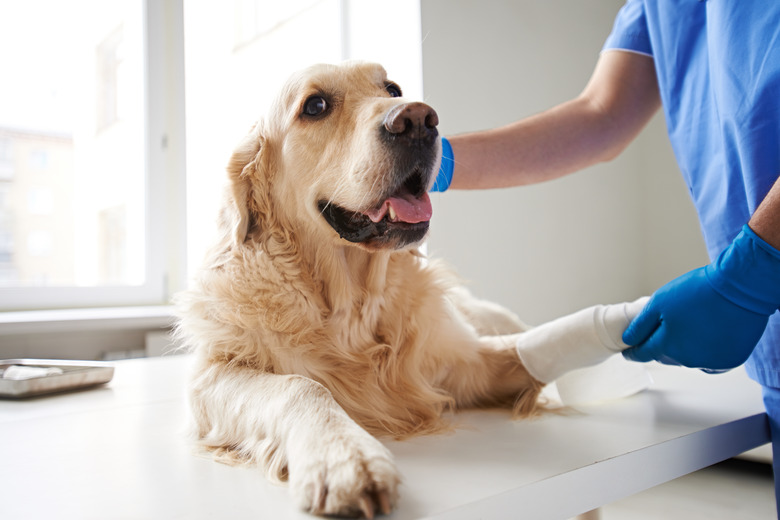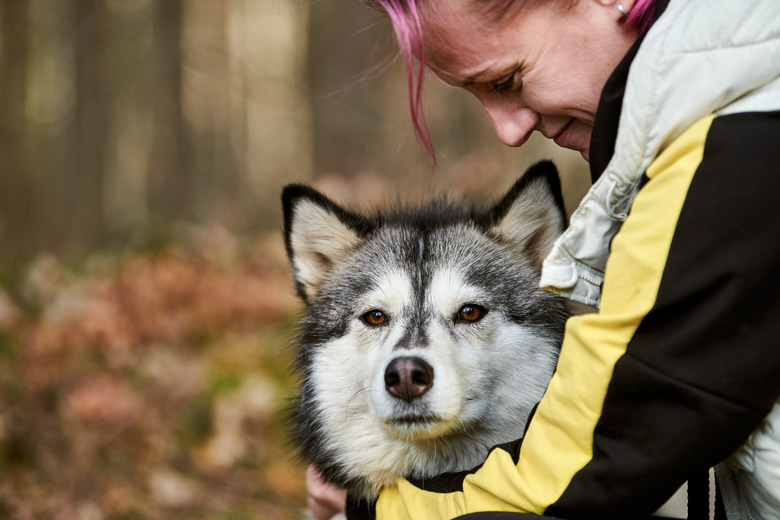Dog Broken Leg Symptoms
When you care for a dog, you want them to be happy and healthy, and you always do your best to keep them as safe as possible. Still, accidents happen. Understanding common dog broken leg symptoms can give you an indication of what type of injury is present. Knowing the symptoms of a broken leg can also help you gauge what action you need to take.
Causes of broken leg in dogs
Causes of broken leg in dogs
There are many ways a dog can break their leg. Usually, a dog broken leg is due to a sudden force or impact. Some examples are:
- Falling from a high place
- Being hit by a car
- Smaller dogs can break legs from being stepped on
- Accidents during sporting events, play, or exercise
- Getting a leg caught (such as in a fence)
- Poor diet that causes an imbalance in a dog's calcium and phosphorus levels
- Bone cancer (more common in middle-age and older dogs) can leave a dog at risk of breaking a leg, which is called a pathological fracture
Dog broken leg symptoms
Dog broken leg symptoms
Various symptoms may alert you to the fact that your dog has broken their leg. If your dog has one or more of these, they may have a broken leg:
- Your dog is unwilling or unable to move their leg
- Swelling
- Bruising (may or may not be present)
- Whining in pain
- They may hold the leg up off the ground
- Limping
- Bone is poking through the skin
- A grinding or popping sound in the bone
Your dog may also show no interest in food or treats, try to isolate themself, and become aggressive toward anyone who tries to touch their leg, including you.
Other potential dog leg injuries
There are some other injuries that can cause these symptoms in your dog. A dog sprained ankle, a torn muscle or ligament, or an abscess can be highly painful. However, if your dog is in significant pain, you should get them to a veterinarian right away. Delaying care can make some conditions worse.
Types of broken bones in dogs
Types of broken bones in dogs
Just like with humans, there are various types of fractures that a dog can experience. The common classifications in dogs are:
- Closed fracture: With a closed fracture, no part of the broken bone punctures through the skin.
- Open fracture: With an open fracture, the bone breaks the skin.
- Incomplete fracture: This is not a complete break, and the bone is still in one piece.
- Complete fracture: Fractures that aren't incomplete are complete. These fractures are most commonly either transverse, oblique, or comminuted. A transverse fracture is straight across. Oblique fractures are diagonal. Comminuted is when the bone has broken into multiple pieces.
Bones that dogs often break are the long bones in their front legs and back legs, such as the humerus, femur, or tibia. Of course, dogs can break any bone. It's not unusual for small dogs to have their tiny paws stepped on, resulting in fractures in their toes.
How to safely move a dog with a broken leg
How to safely move a dog with a broken leg
If you suspect your dog has a broken leg, contact your veterinarian right away. If your veterinary clinic isn't open, then contact an emergency veterinary hospital. They can give you specific first-aid instructions. Your phone call will also allow them to prepare for your arrival.
Before you handle your dog, you may want to muzzle them for your safety just in case they react in pain. Do not attempt to move, wrap, splint, or manipulate the injured leg. Lift your dog onto a blanket and use that to lift your dog into the car. Place a thick towel or blanket under the injured leg to give it plenty of padding. This can be placed on the larger blanket first before you move your dog.
You will probably need someone to help you. Try to have someone else drive so you can focus on keeping your pet calm and still until you get to the veterinary clinic.
Treatment of a dog's broken leg
Treatment of a dog's broken leg
Your veterinarian will do an exam and take radiographs (X-rays) to evaluate your dog's leg. Just because you can't see a fracture doesn't mean that your dog hasn't broken a bone. Some legs are obviously broken, such as in an open fracture where bone breaks through the skin. But X-rays are still needed to determine what type of break has occurred.
You'll be given treatment options based on what type of fracture your dog has. Some dogs can have a splint or cast, but others will require surgery to place pins in the bone, wires around the bone, and/or external fixation rods to properly support and align the pieces for optimal bone healing. If the leg is severely damaged or if the appropriate surgery can't be performed due to financial constraints, amputation is also an option.
If your veterinary clinic doesn't perform fracture repair surgery, they may refer you to a veterinary surgeon who does. It's also possible they work with an outside veterinarian who can come to the clinic to perform the surgery.
Your dog will also need pain medication, such as an anti-inflammatory made specifically for dogs. Your veterinarian will also let you know how to restrict your pet's activity and for how long as well as any other home care you need to provide. Some dogs may need physical therapy, which you may be taught to perform, or your veterinary clinic may do it. It's possible you may be referred to a specialty hospital that offers advanced physical therapy for dogs.
The bottom line
The bottom line
If your dog has a sudden lameness or an open wound on their leg or if you think their leg is broken, get them to a veterinary hospital right away. Not all fractures are obvious. The good news is that broken legs in dogs are very treatable. With the appropriate treatment and rest, most dogs can make a full recovery after breaking a bone. The best thing you can do for your dog is to try to stay calm and quickly get them the care they need.



